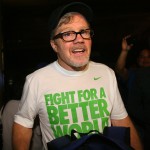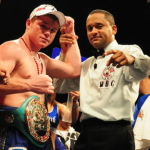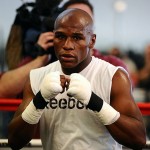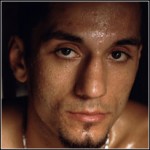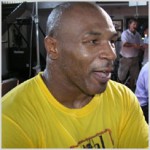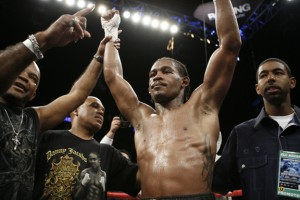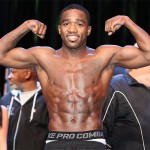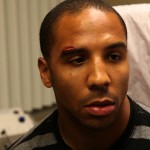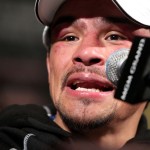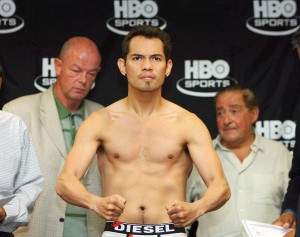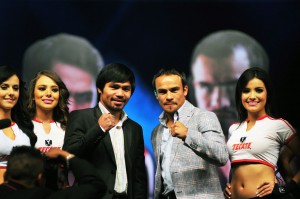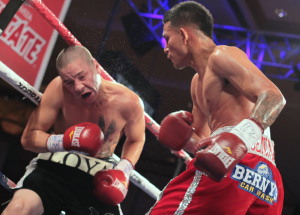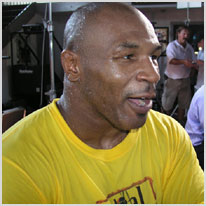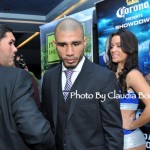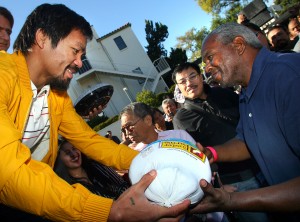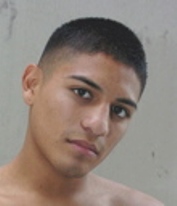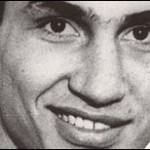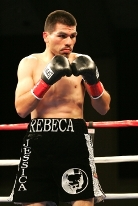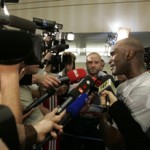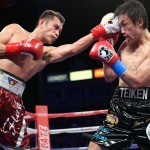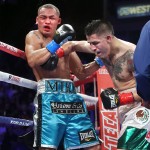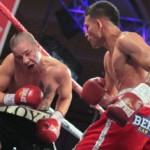Rios-Alvarado: More resumption than rematch
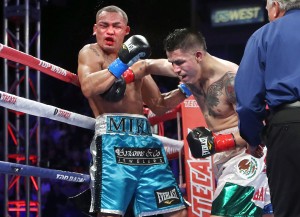
Brandon Rios-Mike Alvarado II Saturday night at Las Vegas’ Mandalay Bay might be more of a continuation than it is a rematch. At least, all of the talk seems to promise a resumption of a brawl in Carson, Calif., that ended more than five months ago in a seventh-round TKO victory for Rios.
Make no mistake, Rios and Alvarado might still be fighting if Pat Russell had not ended a bout lacking in subtlety and skillful adjustments, yet spellbinding for its undisguised ferocity. There was some debate then about whether Russell’s stoppage at 1:57 of the seventh was premature. From this seat in Carson, it looked to be well-timed and wise. Moments before Russell intervened, a dazed Alvarado fell forward and into Rios’ chest. Instinct probably would have kept Alvarado on his feet, but only at the price of more punishment.
Nevertheless, Alvarado and his trainer/manager, Henry Delgado, argued then that he should have been allowed to continue. Had the fight gone the distance, it could have wound up as a draw. It was 57-57 on two scorecards. Rios led on the third, 58-56.
In the buildup for Saturday’s HBO-televised fight, Alvarado has repeated the argument, in part because of what he saw in Tim Bradley’s epic decision on March 16 over Ruslan Provodnikov, also in Carson. Russell let that one continue, despite evident signs that Bradley was in real trouble during the early rounds. Even Bradley said he thought he had suffered concussions.
“I thought Bradley got a good opportunity to prove himself, show that heart,’’ Alvarado said during a conference call. “He was knocked out on his feet pretty much. I thought the referee was fair, the more I saw it.’’
Translation: Alvarado is asking for the same chance that Bradley got. Given Russell’s apparent inconsistency, it’s a fair argument. But boxing is only a debate club during news conferences. For those of us fortunate enough to be in ringside seats, we’re only in danger of adding pounds to our ever-expanding cheeseburger bellies during the pre-fight meal.
A tough fight means heightened danger. It also means a tough call is likely. Referee Tony Weeks might have the toughest job of all Saturday night. Rios-Alvarado has taken on a predictable tone. Some blood lust is baked into the expectations. It’s hard to see how the Rios-Alvarado resumption will differ from the style witnessed on Oct. 13. By their own admission, Rios and Alvarado aren’t sweet scientists.
“We have the same type of style,’’ Rios said. “We both go and fight each other. We try to get the job done the only way we know how. We can try to change it up in the gym. But once the bell rings and we get hit, we go back to do doing what we know how to do. That’s the warrior mentality that comes out of us.
“Mike Alvarado is Mike Alvarado. Brandon Rios is Brandon Rios.’
There’s speculation that the prospect for more of the same will be altered by adjustments from Alvarado, who is believed to be more athletic because of his wrestling background. Alvarado has even hinted at possible adjustments. But that might be a pre-fight ploy in an attempt to keep Rios guessing.
“You can always train differently to try to change things up, but I think our styles and the way we approach the ring, it is automatically going to turn into that kind of fight,’’ Alvarado said during the conference call on March 21. “They are the styles we have. We are both warriors. We just fight and whoever comes out on top, that’s just the way it’s going to go.’’
Alvarado apparently got into an unscheduled brawl sometime in early February. Cuts on his right cheek and down the right side of his neck are visible in the video, Road to Rios-Alvarado II.
“It hasn’t hindered me,’’ said Alvarado, who said the cuts are no reason to worry. “It was just a little accident. I was just at the wrong place at the wrong time and it was a little accident.’’
What’s expected Saturday night will be no accident. But it’ll look like one, another one in a chapter that could have fans asking for even more.
What was he thinking? Guerrero wasn’t
It’s a good thing there’s no reliable test for stupidity. Boxing would come up positive every time. The latest example: Robert Guerrero’s arrest Thursday for trying to check baggage that included a handgun onto a flight in New York.
Remember Plaxico Burress? Guess not. Burress, then a New York Giants receiver, wound up doing nearly two years in jail on a 2009 weapons charge in New York. And he shot himself.
Circumstances look to be a lot different. Burress’ gun was concealed and loaded. According to reports, Guerrero informed the airline that he had a hand gun, unloaded and locked in a safe box, according to a joint statement Thursday from Team Guerrero, Golden Boy Promotions and Mayweather Promotions. Guerrero has a California license for the weapon, according to the statement.
Given the national debate over gun control, however, Guerrero could face trouble in New York, where gun laws are more stringent than anywhere else in the U.S. New York Mayor Michael Bloomberg is a vocal proponent of banning guns. If New York is looking to make an example out of someone, Guerrero is in the political cross-hairs. He was all over the New York media during the last few days. His fight on May 4 against Floyd Mayweather Jr. at Las Vegas’ MGM Grand is already in the headlines.
Even if his arrest and arraignment on firearm charges don’t jeopardize the fight, he will have to deal with unwanted distractions He was booked on a flight for Las Vegas, where he had planned to get back into the gym as soon as possible. He was released on his own recognizance, according to the joint statement. His next court appearance is scheduled for May 14, 10 days after the fight.
Mayweather is enough of a problem. He asked for that one. Now, Guerrero has a complicated one that he could have avoided.

